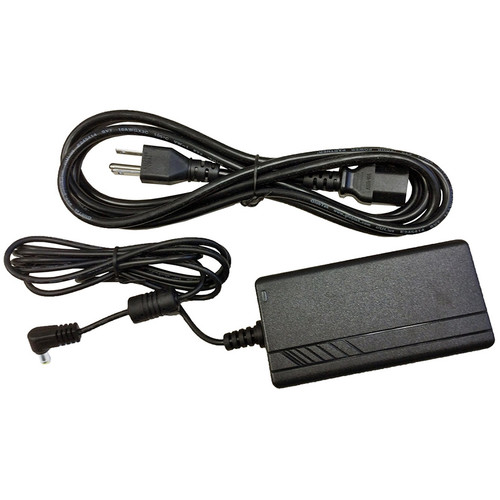The Rupert Neve Portico II Stereo Master Buss Processor is a stereo compressor and mastering limiter that offers unprecedented creative and dynamic control that redefines the boundaries and limitations of traditional 2-channel compression and limiting!
The Rupert Neve Portico II Stereo Buss Processor features detented switches, high-voltage discrete signal paths, as well as an all-new stereo field editor design with band-filtered width and depth. The new Stereo Buss Processor will help you add a new dimension to your sound, with unprecedented creative and dynamic control. Based around the high voltage, discrete and class-A signal paths made famous in the 5088 Mixer and the Portico II: Channel, the Portico II Master Buss Processor is creative tool that redefines the boundaries and limitations of traditional 2-channel compression and limiting. With input and output transformers designed and implemented by Mr. Rupert Neve, the high-voltage 72V topology found in the Master Buss Processor (MBP) will integrate flawlessly with virtually any system. Additionally, the MBP incorporates mastering grade detented pots throughout to fine tune its revolutionary dynamics, tone, and stereo field controls. This new topology is a significant evolution of Mr Rupert Neve's classic designs with appreciable benefits to headroom, dynamic range, distortion, noise, slew rate, bandwidth, and accuracy while still providing for the sweet, musical performance that has been a part of countless recordings.
The Compressor
The Master Buss Processor's two compressor sections allow virtually limitless possibilities in dynamics for either dual mono or stereo sources, with controls for ratio, threshold, attack, release, blend, side chain HPF, limit and make up gain. With the stereo link control engaged, Ch. A settings act as the master control for convenient operation. When engaged, the compressor section can be used in both feed-forward and feed-back modes to provide a transparent modern response (feed-forward), or a smoother more musical vintage response (feed-back). Peak mode alters the compressor's attack to react to peak transients with a roughly .1ms response time. When the Peak switch is disengaged, the compressor responds to the RMS signal in conjunction with the attack and release settings. SC HPF inserts a high pass filter at 250 Hz into the side chain to deal with intense low frequencies that may skew the response of the VCA with certain songs and instruments. "Blend" creates a parallel mix between the compressed and dry signals. By mixing the compressed and dry signals, it is possible to increase the volume of quieter elements in the source material (for instance, delicate snare brushing on a track with much louder hits), while maintaining a natural dynamic feel for the louder elements. To further control the side chain, there is also an insert "send" and "return" that may be paired with an external EQ or other filters for additional manipulation. The "return" may also be used as a "Key" input for ducking one signal to another (for instance, a voice-over keying the compressor to duck a background music track).
The Limiter
The Portico II Master Buss Processor also features an extremely versatile, transparent and musical limiter. At first glance, one might scoff at the single knob operation, however this limiter is extremely intelligent, knowing how to appropriately respond to the various signals presented to it. Our new Adaptive Release Technology is behind this revolutionary performance. Using a blend of release time constants, this limiter will simultaneously respond quickly to transient material (such as the "snap" of a snare drum) and slowly to more sluggish signals (such as a bass guitar). This configuration allows the limiter to grab a transient and let go just an instant later, while also dealing with more constant signals in a slower, more musical way. In this manner, the MBP Limiter can provide a much more aggressive amount of limiting than typically possible, while maintaining the essential character of the music and remaining free of the modulation distortion usually found in a fast acting limiter.
The Stereo Field Editor
The stereo field editor on the MBP takes traditional M-S techniques to new heights with width, depth and corresponding bandpass filters. The width control enables the user to increase or decrease the width of a stereo image (wide/mono) and adjust the amount of ambience inherent in the recording. As the width control is rotated toward wide, the amount of difference material is boosted, often resulting in more ambient material, and accentuated stereo reverbs. Conversely, the stereo field is contracted when rotated to mono, and, if the left and right channels are highly coherent (i.e. both channels include closely similar material that is in phase), this mono content is enhanced. If the phase of one of the input channels is then reversed the mono content may be virtually eliminated. Because the amount of effect the width control has is entirely dependent on the amount of stereo information in the original source material and the interplay between the stereo field editor"s other controls, listening and experimentation are essential for the best results.
Rupert Neve Portico II Stereo Master Buss Processor Features
- Compression: For signals below the "threshold" level that has been set, a compressor provides a linear path allowing signals to be amplified without the gain being adjusted in any way. When signals exceed the "threshold" level, the gain is reduced in a controlled manner that depends on the Ratio that has been set.
- Gain: GAIN range provided is from -6dB to +20 dB. When compression has taken place, the gain control is necessary to increase the overall gain to restore the program level.
- Limiter: Musically transparent brick-wall limiting activated when the signal reaches the limiter threshold. Attack time is .03 mS in order to reduce the first half of a 20 kHz waveform over the threshold, with Serial Adaptive Release.
- Texture: Continuously variable control for Silk and Silk+ modes allows the engineer to fine tune the harmonic ratio and tonality of each channel
- FF/FB: Changes the VCA Detection from a forward feed design (fast, more accurate attack & release) to a feed back design (smoother, more musical response)
- Peak / RMS Compression Selection: When engaged, the MBP compressor uses a combination of peak and RMS (average) detection to trigger the VCA set below 1ms. When disengaged, it follows RMS alone.
- SC HPF: Introduces a HPF at 250Hz to the VCA side chain signal. This allows the compressor to disregard sustained low frequency content.
- Ratio: Range from 1:1 to LIMIT (i.e. 40:1)
- Threshold: Range from -30dBu to +20dBU
- Attack Time: Range from 20 mS to 75 mS.
- Release / Recovery Time: Range of RELEASE time is 100 mS to 2.5 Seconds.
- Stereo Operation: When the LINK switch is engaged, channel A becomes the master control, and any gain reduction happens simultaneously in both channels
- LED Meters: Four Peak LED METERS are provided that show stereo output levels and gain reduction. Output level meter covers the range from -10 to +22 dBu and above which is regarded as overload. The reduction is calibrated in dB covering the range 1 to 22 dBu, reading from top to bottom
- Side Chain Send/Return: External compressor side chain send and return on 2 x TRS jacks. The send is always active and normalled to the return (NOTE: If the send and return are connected to a patchbay, the send should be normalled or connected to the return by default, as the compressor will not trigger if the return has no signal)
3 Reviews Hide Reviews Show Reviews
-
Flagship piece from Rupert Neve
Sep 16th 2023This is an amazing piece of gear, and is an instant classic in my opinion. The way that it can finesse audio is pretty unbelievable and I highly recommend it.
-
Mbp
Jul 30th 2014Awesome piece! It"s the prize in my racks!!!!!
-
A CLASSIC IN THE MAKING
Apr 18th 2014What else can I say?! This thing is versatile! Mono/stereo, Silk blue/red, and the SFE. The VCA compressors in this are great, don't get me wrong and the ability to feed forward or backwards really give you some warmth. But what I really use this for is the SFE on my 2bus. This is a great tool to "fix" things on your two bus. You can bring your LM's forward or push em back. Or you can widen your HMs or narrow (mono'ize) your lows. The closest thing I can think of that is close to this (outboard) is the UBK Clariphonic, but for your two bus. Get it and in 20 years, when they name this one of the top 20, you'll say "He&* yeah..."
Write a Review

















 Sign Up for exclusive sales and offers!
Sign Up for exclusive sales and offers!